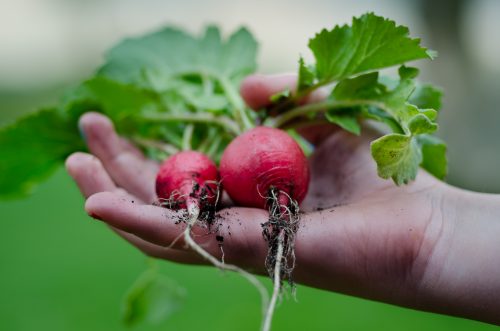Last Updated on December 21, 2020 by HodgePodgeDays
Once you get into growing your own food in your own garden, it can become something of an addiction. It saves you a lot of money on ingredients in meals or on simple treats like blueberries. When you grow your own food, something about it just tastes better, too. Knowing that you put the work in producing the food on your own plate is honestly more fulfilling than many expect to be, initially. But there are risks to growing your food at home that can result in all your efforts being for naught. Before you deal with the frustration of your hard work going down the drain, here are three risks, in particular, to watch out for.

Get rid of the nibblers
Inviting some nature into the garden, whether it’s bringing in butterflies or making room with a hedgehog hut, can make the garden not only a much more relaxing and pleasant place to be. It can make it environmentally friendly, too. But if you let nature run wild, you can be certain your homegrown foodstuffs won’t last very long thanks to the pests. However, pesticides can often have a negative effect on the food you’re growing, too. Get to know which pests are likely to eat the foods you plant and find the companion plants that get rid of them. For instance, aphids are a very common concern when growing tomatoes. Aphids are repelled by catnip. Learn the pests that prove a risk to whatever you’re growing and the companion plants or predators you can introduce in the garden to keep them at bay.
Prepare for a cold snap
Planting foodstuffs is a seasonal job, and you’re best off planting when things are in-season. There’s plenty you can plant in the autumn and winter but, even then, a particularly cold snap can utterly ruin your chances of ending up with healthy vegetables. Controlling your climate with tools like Swallow greenhouses gives you some security that all your hard work won’t go down the drain because of one week’s bad weather. A little climate control allows you to have a greater variety of fresh vegetables the whole year round, too.
Keep the food healthy
Your vegetables might grow to a ripe old state no problem, but another issue is whether they’re really safe to eat or not. In urban gardening, in particular, there are risks that might make it less than trustworthy on the plate. As Treehugger suggests, there are real risks to contamination, whether it’s from the soil or the products you use on it. To minimize that risk, it’s a good idea to test the soil you want to use or even buy fresh, tested soil to create new plots. If you live by a road and you’re concerned about contaminated dust being blown in from the traffic, you can build a wall around the vegetable gardens to serve as a barrier against them, too.
Get over the three hurdles above and making your own berries and vegetables in the garden is going to be no issue at all. Now get out there and start growing.
This is a contributed post.
